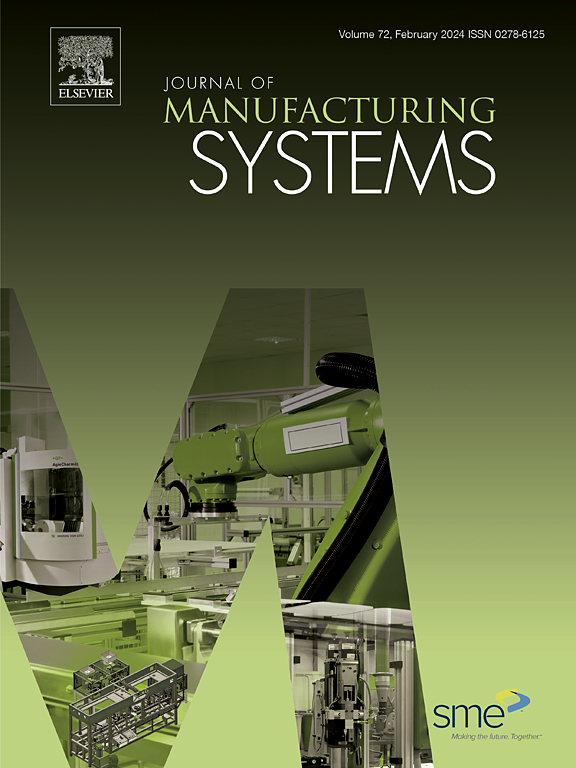Interpretable deep temporal neural networks for in-situ monitoring under varying conditions in micro-electrical discharge machining
IF 14.2
1区 工程技术
Q1 ENGINEERING, INDUSTRIAL
引用次数: 0
Abstract
Monitoring is critical enabler of digitalization in modern manufacturing, supporting enhanced process control, quality assurance, and real-time decision-making. By integrating data-driven techniques with the powerful capabilities of deep learning, monitoring systems can efficiently extract valuable insights from complex, high-dimensional time-series data. However, traditional data-driven approaches often lack interpretability, limiting their adoption in industrial applications that demand high reliability and accountability. To address this challenge, this paper proposes an interpretable monitoring framework based on a deep temporal neural network (DTNN). Designed with a modular architecture, the DTNN integrates key components for embedding, temporal feature learning and classification, enabling it to effectively capture complex underlying patterns in temporal process data and overcome the limitations of conventional methods. The DTNN’s capabilities are demonstrated in the context of micro-electrical discharge machining (micro-EDM), a prominent non-traditional machining process known for producing intricate and high-precision components. Through a pulse discrimination task utilizing a large dataset of reliable labels, the DTNN achieves superior classification accuracy under varying processing parameters while providing interpretable insights into discharge phenomena. Furthermore, the DTNN monitoring approach is applied to a deep-hole drilling process in micro-EDM, enabling closed-loop control of discharge status and ensuring long-term process stability. The DTNN’s modular design, interpretability and real-time adaptability underscore its potential for advancing data-driven monitoring systems in digital manufacturing.
基于可解释深度时间神经网络的微电火花加工现场监测
监控是现代制造业数字化的关键推动者,支持增强的过程控制、质量保证和实时决策。通过将数据驱动技术与强大的深度学习功能相结合,监测系统可以有效地从复杂的高维时间序列数据中提取有价值的见解。然而,传统的数据驱动方法往往缺乏可解释性,限制了它们在需要高可靠性和可问责性的工业应用中的采用。为了解决这一挑战,本文提出了一种基于深度时间神经网络(DTNN)的可解释监测框架。DTNN采用模块化架构设计,集成了嵌入、时间特征学习和分类的关键组件,使其能够有效捕获时间过程数据中复杂的底层模式,克服了传统方法的局限性。DTNN的能力在微电火花加工(micro-EDM)的背景下得到了证明,微电火花加工是一种突出的非传统加工工艺,以生产复杂和高精度的部件而闻名。通过利用大量可靠标签数据集的脉冲识别任务,DTNN在不同的处理参数下实现了卓越的分类精度,同时提供了对放电现象的可解释的见解。此外,将DTNN监测方法应用于微电火花加工的深孔钻孔过程,实现了放电状态的闭环控制,确保了过程的长期稳定性。DTNN的模块化设计、可解释性和实时适应性强调了其在数字制造中推进数据驱动监控系统的潜力。
本文章由计算机程序翻译,如有差异,请以英文原文为准。
求助全文
约1分钟内获得全文
求助全文
来源期刊

Journal of Manufacturing Systems
工程技术-工程:工业
CiteScore
23.30
自引率
13.20%
发文量
216
审稿时长
25 days
期刊介绍:
The Journal of Manufacturing Systems is dedicated to showcasing cutting-edge fundamental and applied research in manufacturing at the systems level. Encompassing products, equipment, people, information, control, and support functions, manufacturing systems play a pivotal role in the economical and competitive development, production, delivery, and total lifecycle of products, meeting market and societal needs.
With a commitment to publishing archival scholarly literature, the journal strives to advance the state of the art in manufacturing systems and foster innovation in crafting efficient, robust, and sustainable manufacturing systems. The focus extends from equipment-level considerations to the broader scope of the extended enterprise. The Journal welcomes research addressing challenges across various scales, including nano, micro, and macro-scale manufacturing, and spanning diverse sectors such as aerospace, automotive, energy, and medical device manufacturing.
 求助内容:
求助内容: 应助结果提醒方式:
应助结果提醒方式:


